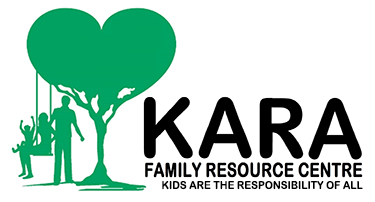
A friend of mine recently had his first baby and, in his new excitement of being a father, he introduced me to a phenomenon between children and colours. Until now, I hadn’t heard of the different effects colours had on people and was intrigued when he told me that colours could affect children’s moods, even enough to make them go to sleep on time or eat their broccoli. The book he introduced me to is called Start Smart: Building Brain Power in the Early Years by Pam Schiller.
To sum up, Schiller describes how colours can enhance learning and influence mood; she gives her insight as to which colours can do what to children and how colours can be used in a classroom or at home to build brain power (not to mention help parents out too).
A chart from the book indicates the following colours can have these effects:
Red The colour red can create alertness and excitement. It usually encourages creativity and appetite. This colour can also be disturbing to anxious individuals.
Blue Blue can create a sense of well-being and lower a person’s temperature.
Sky blue is especially tranquilizing. Blue also has the effect of decreasing appetite.
Yellow This colour is the optimal colour for maintaining attention and encouraging creativity. It also creates a positive feeling.
Orange Orange can increase alertness.
Green Green creates a feeling of calmness.
Purple Purple also creates a feeling of calmness.
Brown The colour brown can increase the sense of security and relaxation. It also has the effect of reducing fatigue.
Off-white This colour can create positive feelings and help maintain attention.
Over the last couple of weeks, I decided to implement this new knowledge in the lives of my kids, but before busting out the paint to colour the walls of my boys’ room, I thought it would be best to perform some harmless experiments to see if Schiller’s findings applied to our lives as well.
Red – I started putting red napkins (in lieu of red placemats) under my children’s’ plates during meals. My kids did eat slightly more food without the continual prompting but my youngest son, Polar Bear, did proceed to tear the napkin into shreds and attempt to eat it. I also introduced a red ball into the playroom. Both children love this new ball and it’s the first one they go for when playing catch. It may be that it is the “new toy” and the other balls just don’t cut it anymore.
Blue – This experiment was exercised by taking my boys for walks outside. It is true that we take walks outdoors all the time but this time I monitored the children on clear, sky blue days. They did seem to be calmer during this activity. It could also have been the fresh air, but my children seemed to argue a lot less when they were outside, often sharing toys and throwing less tantrums.
Yellow and off-white – Schiller’s book portrays these colours as being the best for a school classroom as they have properties to increase and maintain attention. I used yellow during book time to help my children keep their little hands and bodies still while I read to them. I chose only books with yellow jackets which seemed to do the trick (although they may have just been used to the routine). I also broke out an off-white colouring book and provided only yellow crayons to my older son, Grizzly Bear. He did spend a little longer working on his colouring than normal which was a breakthrough since he doesn’t enjoy art and crafts that much.
Orange – Like red, this colour did bring a new level of alertness to my children’s lives when I brought home pumpkins this Halloween. They both became enthralled by the activity and had no issues zeroing in on the activity, diving into the fun and destroying the kitchen. Admittedly this could have something to do with children loving messy play, but it may have been the colour orange too.
Green and purple – Admittedly I did not use the colour purple for any experiments, but I did use green. I set up a green coloured canopy in their room and laid them under it for nap and bedtimes. They seemed to enjoy the canopy and stare at it. My Grizzly Bear continually asked what it was and why it was there, but he did fall asleep faster each night the week that it was up. I also put on nature documentaries for my children (this wasn’t an experiment, just something I do regularly). I did take note that my kids (and I) became calmer and happier when rainforests and oceans dominated the scenery.
Brown – I did not introduce this colour to my children as an experiment but I did take a look at my own life and the influence brown has on it. I noticed that many houses on my street are brown and wondered if the colour choice by the developer was intentional. I also noticed that my parents’ vehicle is brown, and I do feel quite safe when in it, although that may be because my Dad is often the driver.
These little activities and experiments were fun to complete and entertaining for my children. While I still don’t know if I’m a believer, I did notice a few times that colours really did have different effects on my children (although hunger and exhaustion did trump most effects). All in all, perhaps I will take the plunge to paint the walls green with a tranquilizing blue ceiling!
